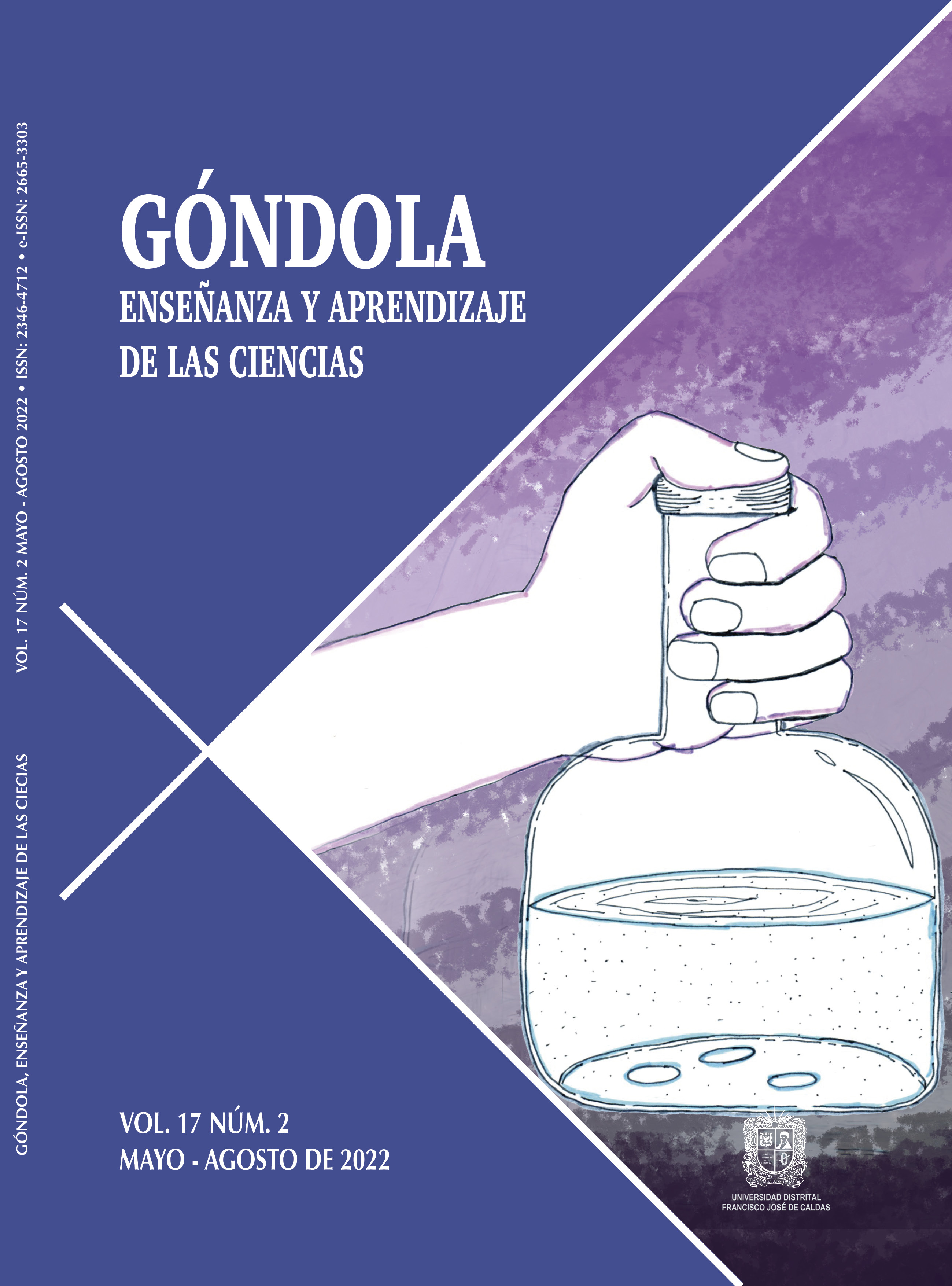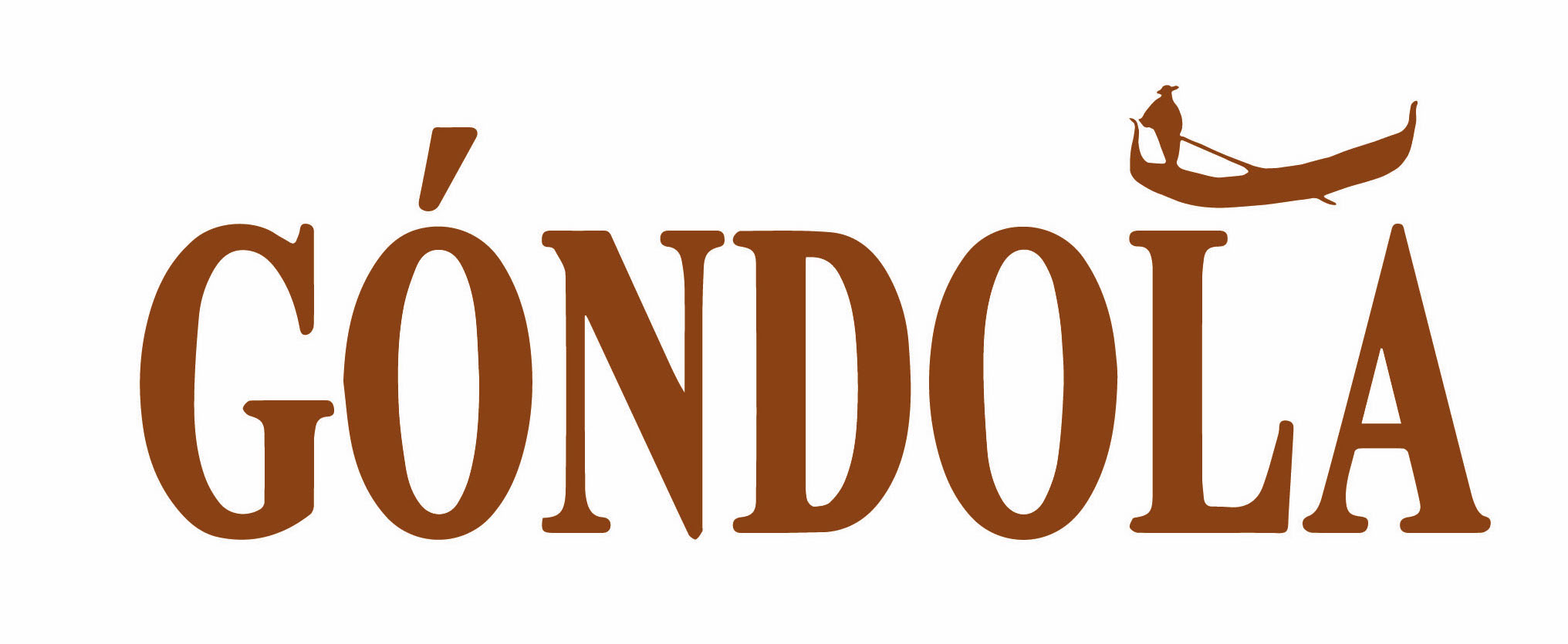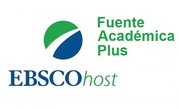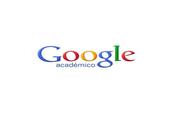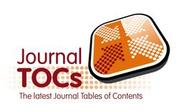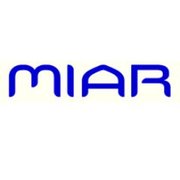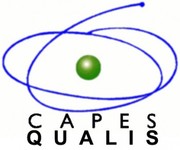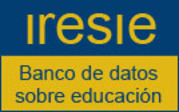DOI:
https://doi.org/10.14483/23464712.17927Published:
2022-06-15Ensino de probabilidade e estatística na educaçao fundamental da Base Nacional Comum Curricular do Brasil
Teaching probability and statistics in elementary and middle school in Brazil's Common National Curriculum Base
Enseñanza de probabilidad y estadística en la educación primaria y secundaria obligatoria de la Base Curricular Nacional Común de Brasil
Keywords:
Enseñanza, Probabilidad y Estadística, Educación primaria y secundaria obligatoria, Currículo Nacional (es).Keywords:
Ensino, Probabilidade e Estatística, Ensino Fundamental, Currículo Nacional (pt).Keywords:
Teaching, Probability and Statistics, Elementary and middle school, National Curriculum (en).Downloads
Abstract (pt)
Neste artigo estudam-se e discutem-se as orientações curriculares da Base Nacional Comum Curricular no que diz respeito à unidade temática Probabilidade e Estatística, do Ensino Fundamental no Brasil, tendo em consideração as orientações atuais para o ensino dessa temática. Adotando uma abordagem qualitativa e recorrendo à análise de conteúdo, o estudo das orientações curriculares inicia-se pela análise dos aspectos gerais da unidade temática e prossegue com a análise detalhada das subunidades de Probabilidade e de Estatística, distinguindo em cada uma delas os dois níveis escolares: os anos iniciais (do 1º ao 5º ano) e os anos finais (do 6º ao 9º ano). Em termos de resultados, tendo por referência as orientações atuais para o ensino de Probabilidade e Estatística, na Probabilidade salienta-se a exploração de situações do cotidiano e de experimentos aleatórios (simulados ou reais) e a omissão de jogos de sorte e azar, enquanto na Estatística se destaca a realização de pesquisas de natureza investigativa, a construção, determinação e interpretação de ferramentas estatísticas e o recurso a tecnologias digitais, designadamente planilhas eletrônicas.
Abstract (en)
In this article, the curricular guidelines of the National Common Curricular Base are studied and discussed regarding the thematic unit of Probability and Statistics, in the Elementary and Middle School in Brazil, considering the current guidelines for the teaching of this thematic. Adopting a qualitative approach and using content analysis, the study of curriculum guidelines begins by analysing the general aspects of the thematic unit and continues with the detailed analysis of the Probability and Statistics subunits, distinguishing in each of them two school levels: the initial years (from 1st to the 5th grade) and the final years (from the 6th to the 9th grade). In terms of results, with reference to the current guidelines for the teaching of Probability and Statistics, in Probability emphasizes the exploration of everyday situations and random experiments (simulated or real) and the omission of games of chance, while in Statistics it stands out investigative projects, construction, determination and interpretation of statistical tools and the use of digital technologies, namely electronic spreadsheets.
Abstract (es)
En este artículo se estudian y discuten los lineamientos curriculares de la Base Nacional Común Curricular con respecto a la unidad temática de Probabilidad y Estadística, en la educación primaria y secundaria obligatoria en Brasil, tomando en cuenta los lineamientos actuales para la enseñanza de esta temática. Adoptando un enfoque cualitativo y utilizando el análisis de contenido, el estudio de los lineamientos curriculares se inició con el análisis de los aspectos generales de la unidad temática y se continuó con el análisis detallado de las subunidades de Probabilidad y Estadística, distinguiendo en cada una de ellas dos niveles escolares: los años iniciales (del 1º al el 5º año) y los años finales (del 6º al 9º año). En términos de resultados, teniendo como referencia los lineamientos actuales para la enseñanza de Probabilidad y Estadística, en la Probabilidad se enfatiza la exploración de situaciones cotidianas y experimentos aleatorios (simulados o reales) y la omisión de juegos de azar, mientras que en la Estadística se destacan las investigaciones estadísticas, la construcción, determinación e interpretación de herramientas estadísticas y el uso de tecnologías digitales, a saber, hojas de cálculo electrónicas.
References
ALVES, M. P.; FERNANDES, J. A. Alterações do programa de matemática do ensino básico português: o caso do tema Organização e Tratamento de Dados. Olh@res, Guarulhos, v. 3, n. 1, p. 280-305, 2015.
https://doi.org/10.34024/olhares.2015.v3.298
BAKKER, A.; DERRY, J. Lessons from inferentialism for statistics education. Mathematical Thinking and Learning, Abingdon, v. 13, n. 1-2, p. 5-26, 2011.
https://doi.org/10.1080/10986065.2011.538293
BATANERO, C. Sentido estadístico. Componentes y desarrollo. In: CONTRERAS, J: M.; CAÑADAS, G. R.; GEA, M. M.; ARTEAGA, P. (Eds.). Actas de las I Jornadas Virtuales en Didáctica de la Estadística, Probabilidad y Combinatoria. Granada: Departamento de Didáctica de la Matemática de la Universidad de Granada, 2013. p. 1-8.
BATANERO, C.; DÍAZ, C.; CONTRERAS, J. M.; ARTEAGA, P. Enseñanza de la estadística a través de proyectos. In: BATANERO, C.; DÍAZ, C. (Eds.). Estadística con proyectos. Granada: Universidad de Granada, 2011. p. 9-46.
BEN-ZVI, D. Toward understanding the role of technological tools in statistical learning. Mathematical Thinking and Learning, Abingdon, v. 2, n. 1-2, p. 127-155, 2000.
https://doi.org/10.1207/S15327833MTL0202_6
BOROVCNIK, M.; KAPADIA, R. A historical and philosophical perspective on probability. In: CHERNOFF, E. J.; SRIRAMAN, B. (Eds). Probabilistic Thinking: Presenting Plural Perspectives. Dordrecht: Springer, 2014. p. 7-34.
https://doi.org/10.1007/978-94-007-7155-0_2
BURRIL, G.; BIEHLER, R. Fundamental statistical ideas in the school curriculum and in training teachers. In: BATANERO, C.; BURRIL, G.; READING, C. (Eds.). Teaching statistics in school mathematics - Challenges for teaching and teacher education: A joint ICMI/IASE study. Dordrecht, The Netherlands: Springer, 2011. p. 57-69.
https://doi.org/10.1007/978-94-007-1131-0_10
DAMIN, W.; SANTOS JUNIOR, G. dos; PEREIRA, R. S. G. Desenvolvimento de competências estatísticas: análise de um caso de ensino por investigação. Góndola, Enseñ Aprend Cienc, Bogotá, v. 11, n. 1, p. 55-69, 2016. doi: 10.14483/udistrital.jour.gdla.2016.v11n1.a4.
https://doi.org/10.14483/udistrital.jour.gdla.2016.v11n1.a4
FERNANDES, J. A. Intuições e aprendizagem de probabilidades: uma proposta de ensino de probabilidades no 9.º ano de escolaridade. Tese de doutoramento, Universidade do Minho, Braga, 2000.
FERNANDES, J. A.; FREITAS, A. Selection and Application of graphical and numerical statistical tools by prospective primary school teachers. Acta Scientiae, Canoas, v. 21, n. 6, p. 82-97, 2019.
https://doi.org/10.17648/acta.scientiae.5344
FERNANDES, J. A.; CARVALHO, C. F.; CORREIA, P. F. Contributos para a Caracterização do Ensino da Estatística nas Escolas. Boletim de Educação Matemática, Rio Claro, v. 24, n. 39, p. 585-606, 2011.
FERNANDES, J. A.; CARVALHO, C.; RIBEIRO, S. A. Caracterização e implementação de tarefas de Estatística: um exemplo no 7.º ano de escolaridade. Zetetiké, Campinas, v. 15, n. 28, p. 27-61, 2007.
FERNANDES, J. A.; JÚNIOR, A. P. O.; VASCONCELOS, A. P. Caracterização, implementação e avaliação de uma estratégia de ensino de estatística no 7.º ano. Perspectivas da Educação Matemática, Campo Grande, v. 6, n. 11, p. 93-109, 2013.
FERNANDES, J. A.; SOUSA, M. V.; RIBEIRO, S. A. O ensino de estatística no ensino básico e secundário: um estudo exploratório. In: FERNANDES, J. A.; SOUSA, M. V.; RIBEIRO, S. A. (Orgs.). Ensino e aprendizagem de probabilidades e estatística - Actas do I Encontro de Probabilidades e Estatística na Escola. Braga: Centro de Investigação em Educação da Universidade do Minho, 2004. p. 165-193.
FREUDENTHAL, H. Mathematics as an educational task. Dordrecht: D. Reidel Publishing Company, 1973.
https://doi.org/10.1007/978-94-010-2903-2_2
GAISE Report. Guidelines for assessment and instruction in statistics education: A Pre-K-12 Curriculum Framework. Alexandria, VA: The American Statistical Association, 2005. [Online: http://www.amstat.org/education/gaise]
GAL, I. Adults' statistical literacy: Meanings, components, responsibilities. International Statistical Review, Voorburg, v. 70, n. 1, p. 1-25, 2002.
https://doi.org/10.1111/j.1751-5823.2002.tb00336.x
GARFIELD, J.; BEN-ZVI, D. Developing Students' Statistical Reasoning: Connecting Research and Teaching Practice. Dordrecht, The Netherlands: Springer, 2010.
JOLLIFFE, F. The changing brave new world of statistics assessment. In: PHILLIPS, B.; WELDON, L. (Eds.). The Proceedings of the ISI/IASE Satellite on Assessing Student Learning in Statistics. Voorburg: International Statistical Institute, 2007. s/p.
https://doi.org/10.52041/SRAP.07102
MACGILLIVRAY, H.; PEREIRA-MENDONZA, L. Teaching statistical thinking through investigative projects. In: BATANERO, C.; BURRIL, G.; READING, C. (Eds.). Teaching statistics in school mathematics - Challenges for teaching and teacher education: A joint ICMI/IASE study. New York, NY: Springer, 2011. p. 109-120.
https://doi.org/10.1007/978-94-007-1131-0_14
MEC. Base Nacional Comum Curricular - Educação é a Base. Brasília: Ministério da Educação, 2018.
MOORE, D. S. New pedagogy and new content: The case of statistics. International Statistical Review, Voorburg, v. 65, n. 2, p. 123-137, 1997.
https://doi.org/10.1111/j.1751-5823.1997.tb00390.x
MOORE, D. S. Teaching statistics as a respectable subject. In: GORDON, F.; GORDON, S. (Eds.). Statistics for the twenty-first Century. Washington, DC: The Mathematical Association of America, 1992. p. 14-25.
NCTM. Princípios e normas para a matemática escolar. Lisboa: APM, 2007.
PETOCZ, P.; REID, A. Learning, and assessment in statistics In: PHILLIPS, B.; WELDON, L. (Eds.). The Proceedings of the ISI/IASE Satellite on Assessing Student Learning in Statistics. Voorburg: International Statistical Institute, 2007. s/p.
https://doi.org/10.52041/SRAP.070103
PRATT, D.; DAVIES, N.; CONNOR, D. The role of technology in teaching and learning statistics. In: BATANERO, C.; BURRIL, G.; READING, C. (Eds.). Teaching statistics in school mathematics - Challenges for teaching and teacher education: A joint ICMI/IASE study. New York, NY: Springer, 2011. p. 97-107.
https://doi.org/10.1007/978-94-007-1131-0_13
RODRÍGUEZ, L. F. Probabilidad y estadística para grado primero desde los organizadores curriculares. Góndola, Enseñ Aprend Cienc, Bogotá, v. 9, n. 2, p. 44-59, 2014. doi: 10.14483/jour.gdla.2014.2.a04.
https://doi.org/10.14483/jour.gdla.2014.2.a04
RUMSEY, D. J. Statistical literacy as a goal for introductory statistics courses. Journal of Statistics Education, Alexandria, v. 10, n. 3, 2002.
https://doi.org/10.1080/10691898.2002.11910678
WILD, C.; PFANNKUCH, M. Statistical thinking in empirical inquiry. International Statistical Review, Voorburg, v. 67, n. 3, p. 223-248, 1999.
How to Cite
APA
ACM
ACS
ABNT
Chicago
Harvard
IEEE
MLA
Turabian
Vancouver
Download Citation
License
Copyright (c) 2022 Autor y Góndola. Enseñanza y Aprendizaje de las Ciencias

This work is licensed under a Creative Commons Attribution-NonCommercial-NoDerivatives 4.0 International License.
Gondola, Ens Aprend Cienc. is an open-access publication, free of charge for authors and readers. The publication, consultation or download of the contents of the magazine does not generate any cost for the authors or the readers, since the Francisco José de Caldas District University assumes the expenses related to edition, management and publication. The peer evaluators do not receive any economic retribution for their valuable contribution. The work of all the actors mentioned above is understood as a contribution to the strengthening and growth of the research community in the field of Science Education.
As of December 1, 2018 the contents of the journal are published under the terms of the Creative Commons License Attribution-Noncommercial- ShareAlike 4.0 International (CC-BY-NC-SA 4.0), under which others may distribute, remix, retouch, and create from the work in a non-commercial way, give credit and license their new creations under the same conditions.
The copyright holders are the authors and the journal Gondola, Ens Aprend Cienc. The holders retain all rights without restrictions, respecting the terms of the license in terms of consultation, downloading and distribution of the material.
When the work or any of its elements is in the public domain according to the applicable law in force, this situation will not be affected by the license.
Likewise, we encourage authors to deposit their contributions in other institutional and thematic repositories, with the certainty that culture and knowledge is a good of all and for all.

